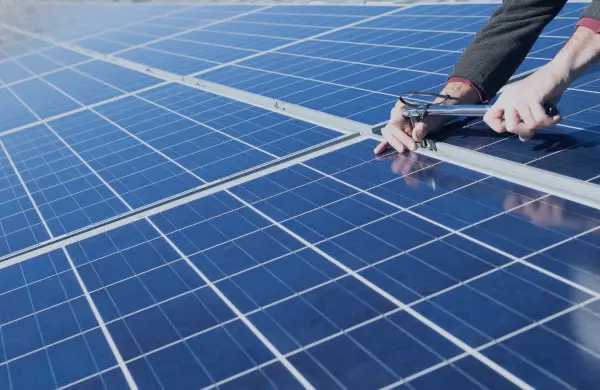Solar energy has emerged as a promising alternative to conventional power sources, and solar arrays play a crucial role in harnessing this renewable energy. A key component of solar tracking systems is the torque tube, which connects photovoltaic (PV) modules and enables simultaneous tracking of the sun’s path. By ensuring proper maintenance of torque tubes, businesses can maximize energy capture and prolong the life of their solar arrays. Thus, solar torque tubes are vital for the optimal performance of solar arrays.
Solar Torque Tubes: What is it?
Solar torque tubes are fundamental components in solar arrays that facilitate the effective functioning of PV modules. These tubes connect the panels while enabling them to track the sun’s movement throughout the day, optimizing energy capture. The characteristics and types of torque tubes vary, providing flexibility in design and installation.
Types and Characteristics of Torque Tubes
| Type | Characteristics |
|---|---|
| Circular | Traditional shape with excellent torsional stiffness |
| Square | Versatile shape suitable for various installation scenarios |
| Pentagonal | Enhanced rigidity compared to circular or square tubes |
| Octagonal | Superior performance characteristics, reduced weight |
| D-shaped | Unique cross-section offering stability and strength |
Many torque tubes undergo galvanizing treatment to protect against corrosion, ensuring durability even in harsh environmental conditions.
Maintaining Torque Tubes for Longevity
To ensure fine performance and a long lifespan of torque tubes, regular maintenance is essential. Businesses should conduct routine inspections to identify any signs of corrosion or damage that may compromise structural integrity. Timely repairs or replacements can prevent potential failures and production downtime.
Additionally, it is crucial to check the proper alignment and secure mounting of PV panels on the torque tube. Misalignment or loose connections can impact tracking accuracy and efficiency, resulting in reduced energy capture.
Maintaining solar torque tubes is a must. However, if the maintenance is not done properly, it is of no use. So, some quick tips for maintaining torque tubes are as follows:
- Conduct regular inspections for corrosion and damage.
- Repair or replace damaged tubes promptly.
- Check the alignment of PV panels and make necessary adjustments.
- Ensure secure mounting to prevent shifting or loosening.
Safety Tips for Torque Tube Usage
While working with torque tubes, it is essential to prioritize safety measures to protect personnel and equipment. During installation and maintenance procedures, proper handling techniques should be followed to minimize the risk of accidents.
Considering load capacity and wind resistance is crucial in preventing structural failure. Each torque tube has specific guidelines for load-bearing capabilities. They need to be adhered to strictly during installation. Wind resistance calculations should also be taken into account when selecting torque tubes to ensure they can withstand weather conditions specific to the installation location.
Welding Robots for High-Quality Production
To ensure high-quality production, welding robots are increasingly utilized in manufacturing luminous and solar tracker torque tubes. These automated systems offer precise welding quality and accuracy; meeting specified standards. By leveraging welding robots, businesses can enhance the durability and performance of their torque tubes.
Utilizing welding robots eliminates human error while achieving consistent welds across multiple units. This automation ensures that each torque tube meets stringent quality standards, contributing to the longevity and reliability of solar arrays.
Key Takeaways
Proper maintenance of solar torque tubes is essential for maximizing the energy capture and longevity of solar arrays. Regular inspections, alignment checks, and secure mounting of PV panels are vital in ensuring optimal performance. By leveraging welding robots, businesses can enhance the durability and accuracy of torque tubes, leading to improved overall system reliability.
Reliable industry experts in manufacturing services like Zetwerk offer precision machining, fabrication, casting, and surface treatment solutions to meet diverse client requirements. Explore their sites for more comprehensive knowledge on related topics that will help your business thrive in the ever-evolving manufacturing landscape.
FAQs
Torque tubes facilitate the simultaneous tracking of the sun’s path by connecting PV modules, ensuring maximum exposure to sunlight and optimizing energy capture for solar panel installations.
Solid torque tube bushings are durable components that minimize wear between rotating parts, reducing frictional losses and extending the lifespan of the torque tube system in solar arrays.
Yes, torque tubes with octagonal cross-sections can be utilized in various solar panel installation configurations. Their unique design offers superior torsional stiffness, secure mounting options, and improved performance characteristics.
When handling torque tubes during installation or maintenance procedures, it is important to follow proper safety protocols. This includes ensuring safe lifting techniques, considering load capacity and wind resistance, and using personal protective equipment (PPE).
Regular inspections are essential for maintaining the longevity of torque tubes in solar arrays. It is recommended to conduct thorough inspections at least once a year to check for corrosion, damage, proper alignment of PV panels, secure mounting points, and overall structural integrity.








